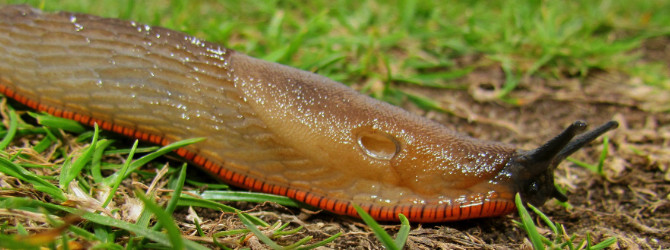Protecting our environment has become an important topic, especially as we are constantly hearing about its destruction due to the toxins and pollutants entering the land, water, air and food-supply. Gardeners are becoming more aware of the poisonous effects synthetic chemicals have on beneficial insects and pollinators, as well as the serious issues with chemical runoff into our local waterways. Fortunately, gardeners have less toxic organic options available when it comes to pest-control. When properly used, these organic options are less harmful to plants and the environment, but still put a hurting on the targeted pest.
What is Organic Pest-Control?
Defining organic pest-control in simplified horticultural terms means using products that are from natural sources contained in the environment and not human-made, such as synthetic pesticide chemicals. Organic pest-control products often are made from plant-based materials such as pyrethrins, fermentation products produced from microorganisms like spinosad, or near organic pesticides, such as diatomaceous earth.
Most organic pesticides breakdown faster in the environment than synthetic types and this is due to light and interacting with other chemical products, as well as microorganisms when composting.
Integrated Pest Management (IPM)
Integrated Pest Management or just referred to as IPM is a term and system used by many horticulturists and some may be wondering what exactly that means. IPM is a systems approach to gardening and controlling pest populations. The IPM system strives to be:
- The least destructive to the environment
- Using the most effective systems for manipulating the population of pests
- Using the systems that are most cost-effective
There are six components to the utilizing an IPM system:
- Acceptable Levels of Pests: Since wiping out entire populations of pests are impossible; the emphasis is about controlling the pests and not eradicating them.
- Preventative Cultural Practices Methods: The first line of defense is growing plants tolerant to your local growing conditions and maintaining their healthy growth. Other preventative practices include cleaning pruning tools to lessen the spread of disease, removing diseased plants from the garden and adding fungi and bacteria that are beneficial in preventing root diseases in potted plants.
- Regular Monitoring: It is critical to regularly inspect your plants for pest infestations and then identify the problem. This allows for quicker and more efficient controls before a large population outbreak occurs.
- Controlling Mechanically: If a pest problem becomes large, gardeners first course of action is mechanically controlling the problem. Mechanical control includes hand-picking the pest from the affected plants, using barriers and traps, vacuuming, as well as tillage, which disrupts the pests breeding cycle.
- Using Biological Controls: Allowing natural biological processes to take place, as well as using natural control products can provide an acceptable control of pest problems, have a less toxic effect upon the environment and are usually cost-effective. The main emphasis is promoting the presence of beneficial insects in your garden that will parasitize or eat the problem pest. This process also includes using natural pesticides to control problem pests such as Bt, which affect the pest’s digestive system and it dies.
- Responsibly Using All Pesticides: The main aspect here is to use any pesticide, both synthetic and natural responsibly. This system requires the selected pesticide reaching the targeted pest and making sure the application technique used matches the pest, the targeted crop and using the correct pesticide. Low-volume spray equipment reduces the pesticide covering unintended areas, as well as reducing the amount of pesticides used, which reduces the overall cost.
Striving to implement more organic pest-control options in our gardening habits cannot help but make our own personal backyard environments healthier. It’s natural to think of grabbing that bottle of synthetic pesticide first when you see aphids or other pests covering your tomatoes, strawberries or other food-crops and sometimes, they are the only choice of control when pest populations grow out of hand. Even with organic gardening, there are times nature requires some human-made help, so synthetic-types are necessary. However, by focusing on implementing more environmentally-friendly and natural pest-control methods and preventative practices, the need for more toxic and synthetic pesticides lessens. It’s taking one small personal step to make the entire environment healthier and happier.
